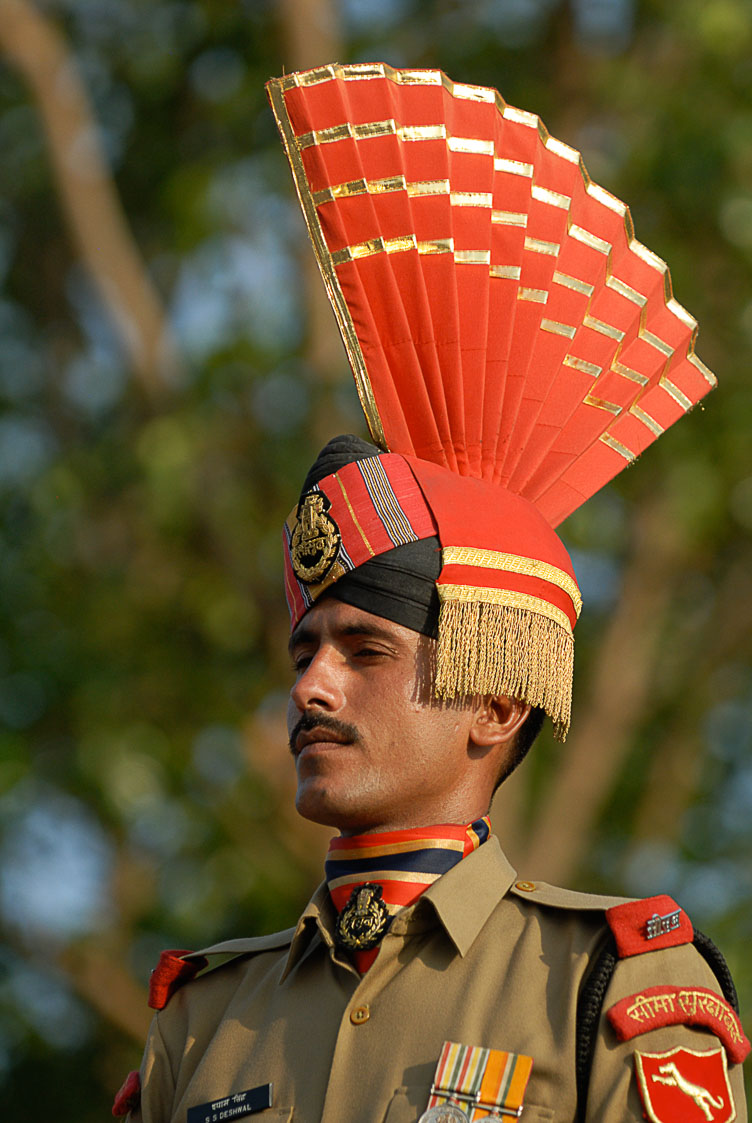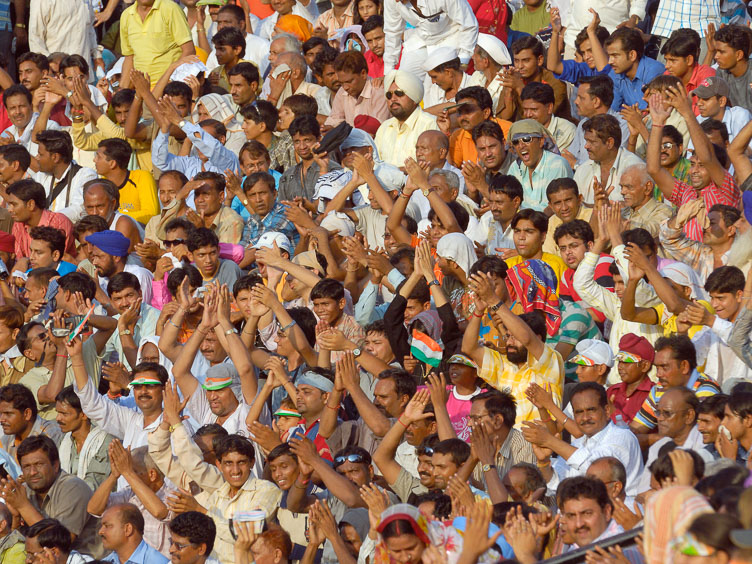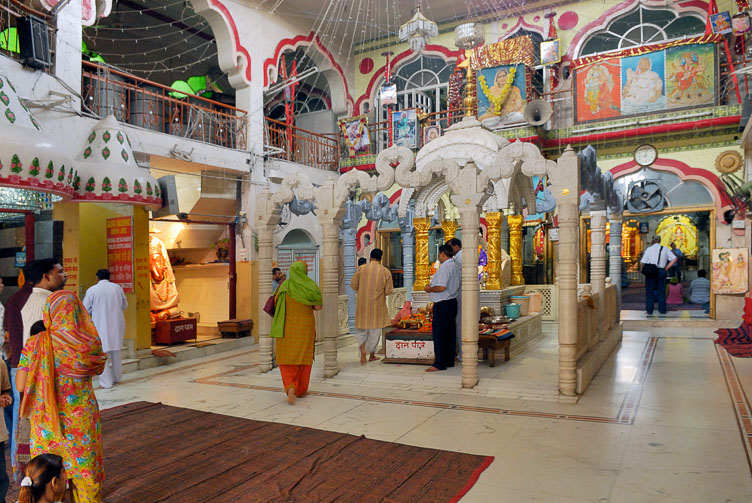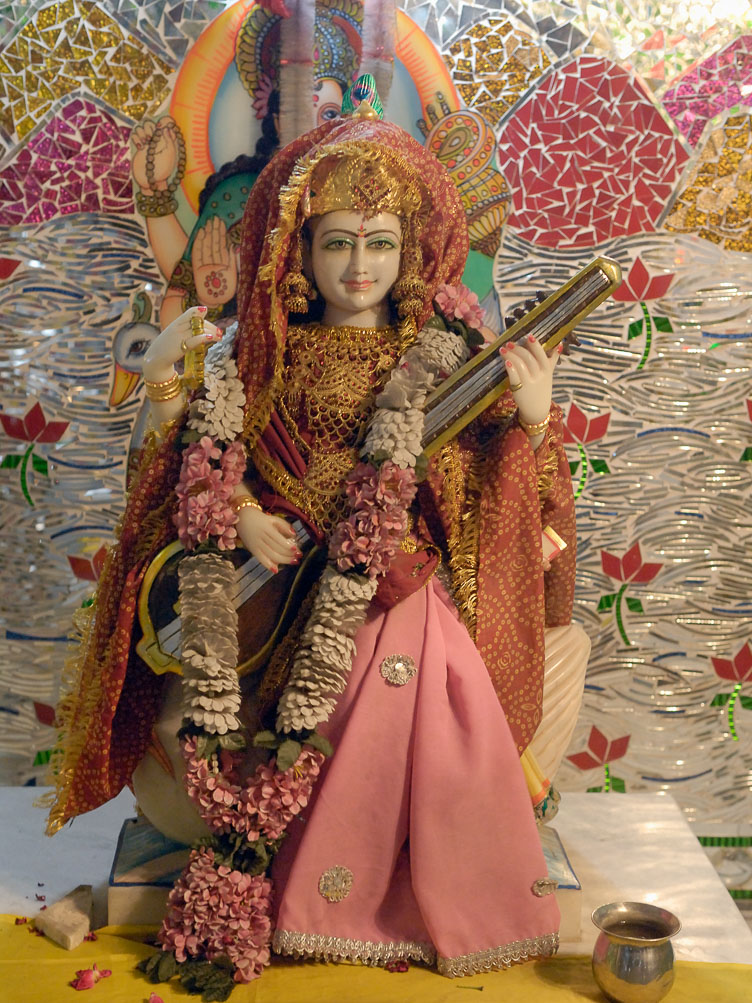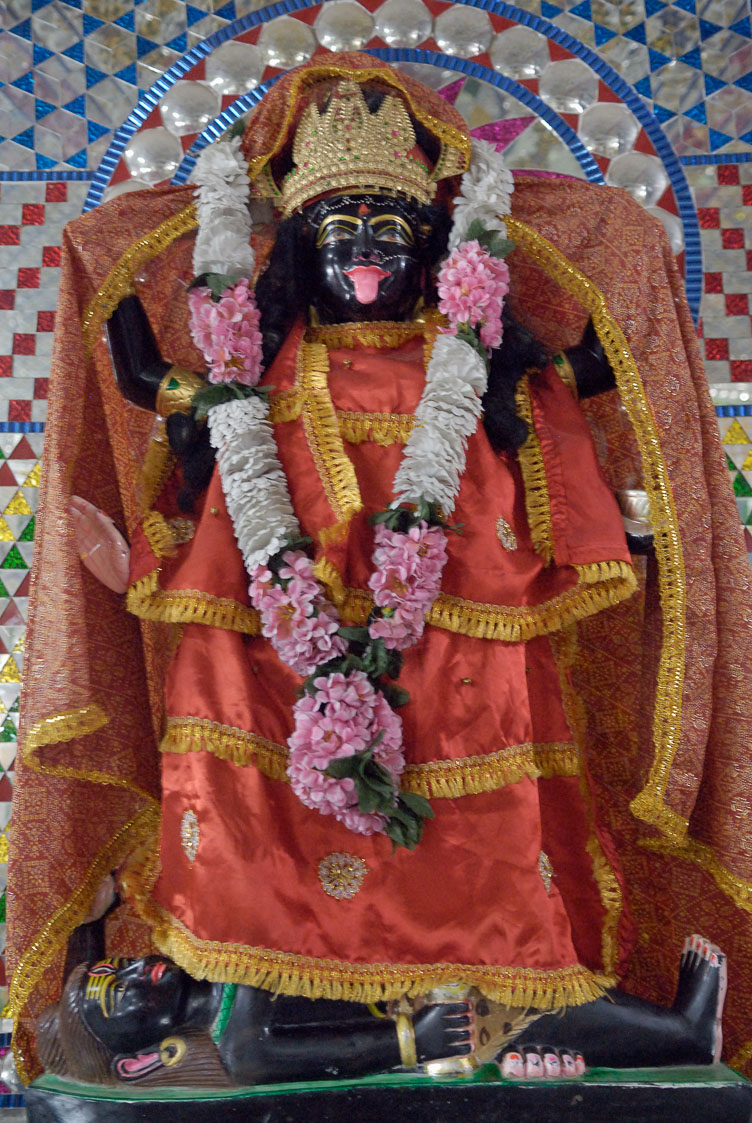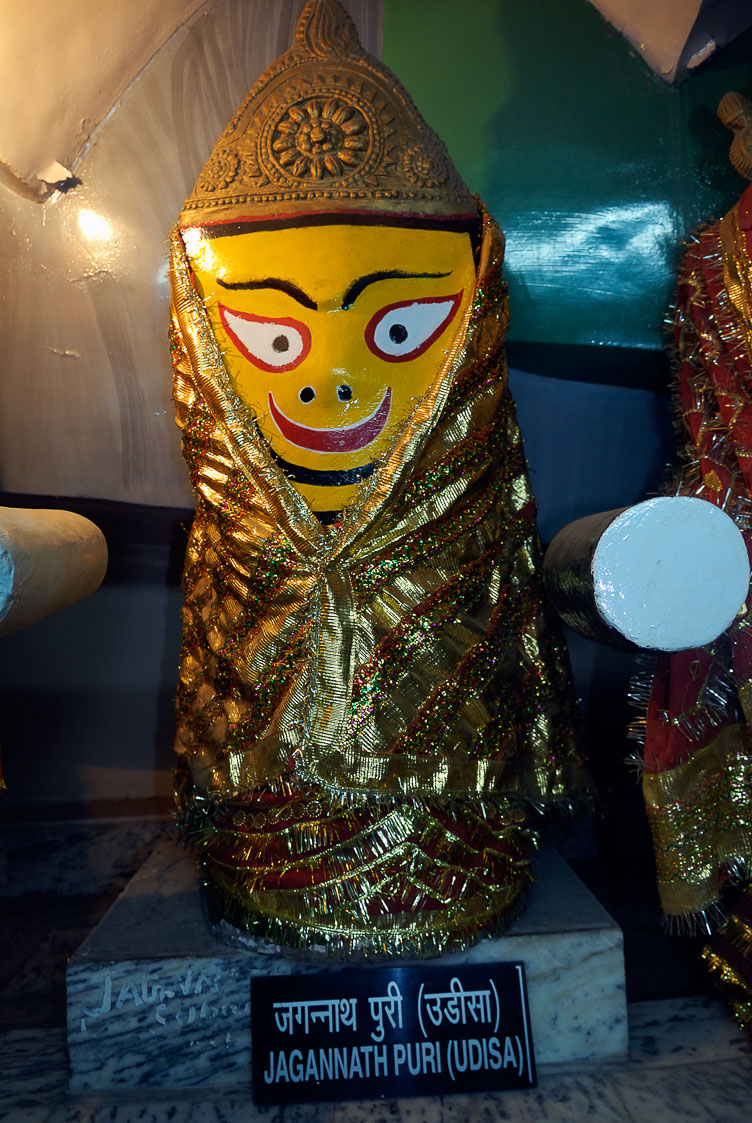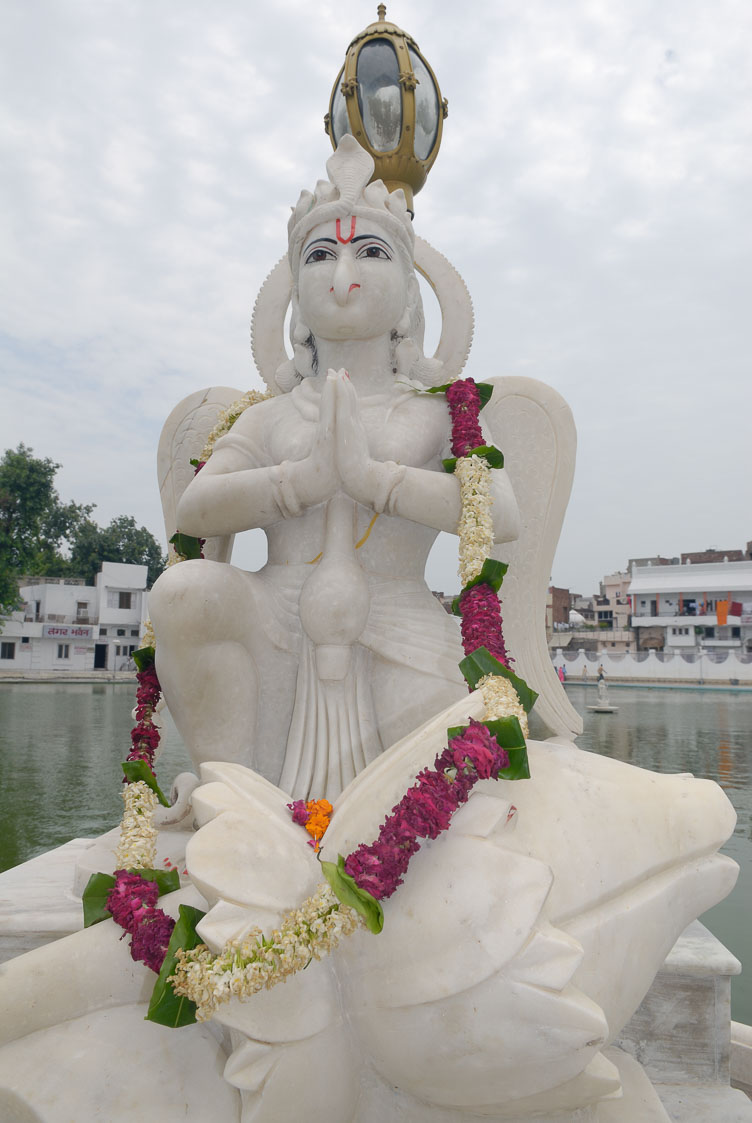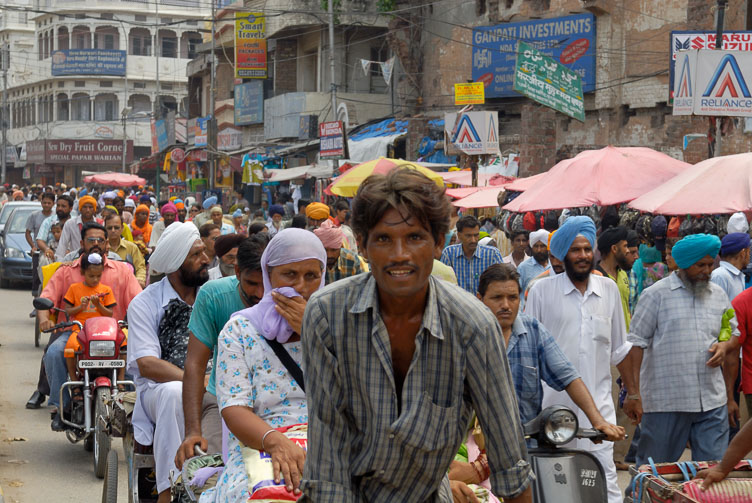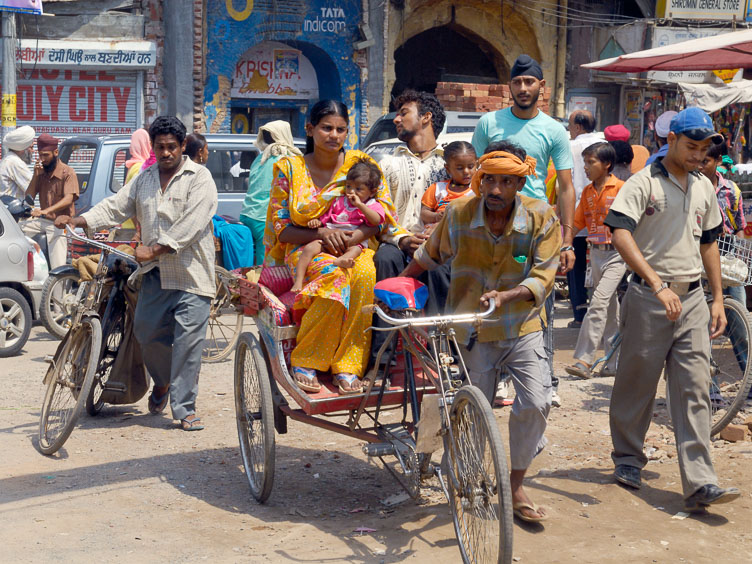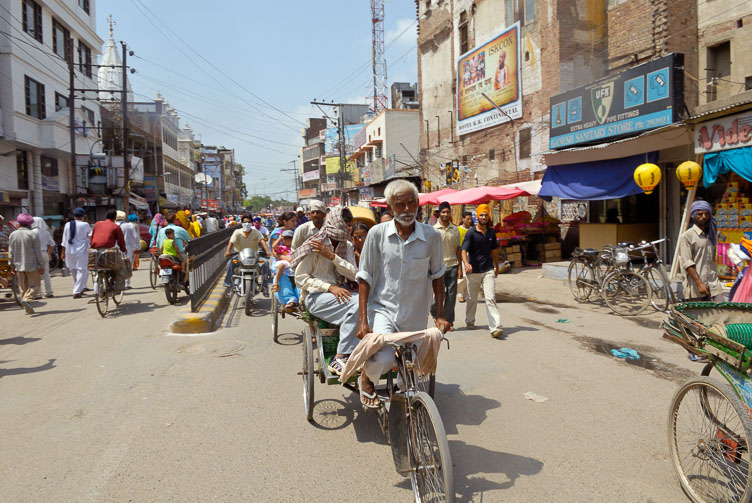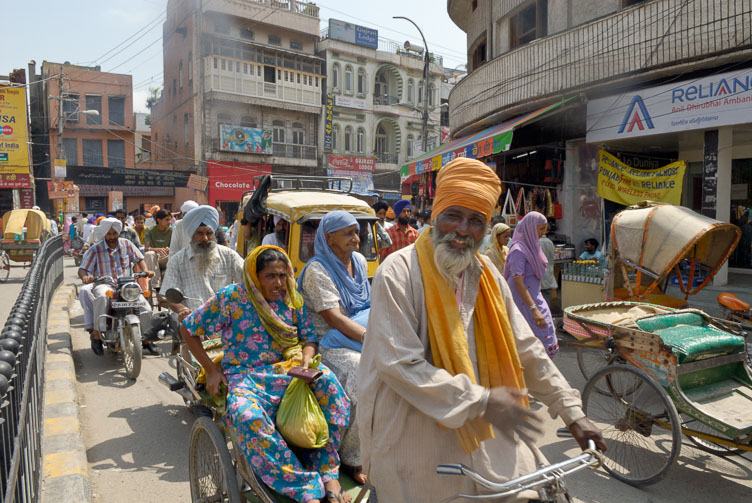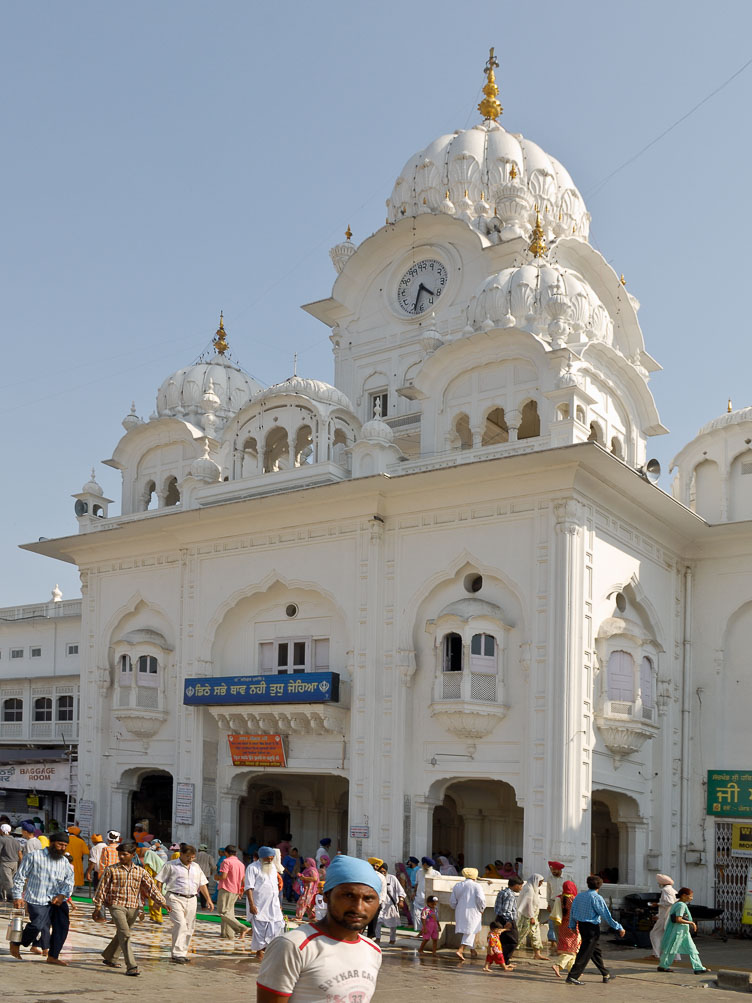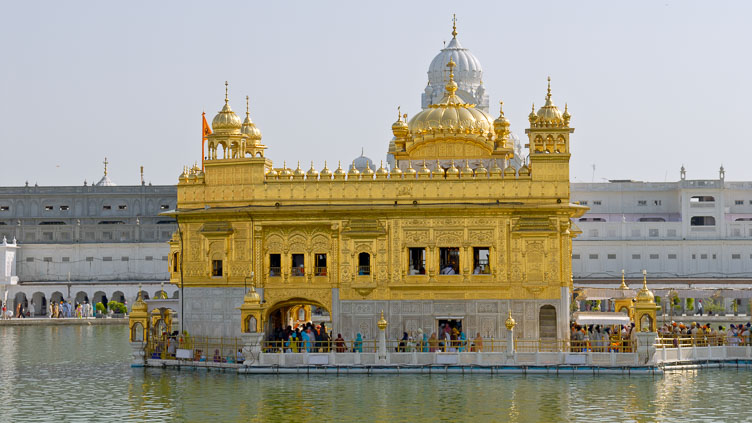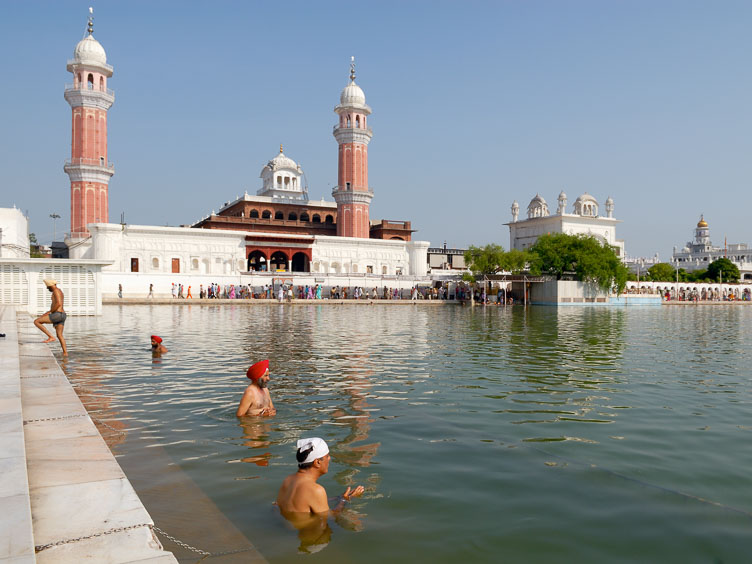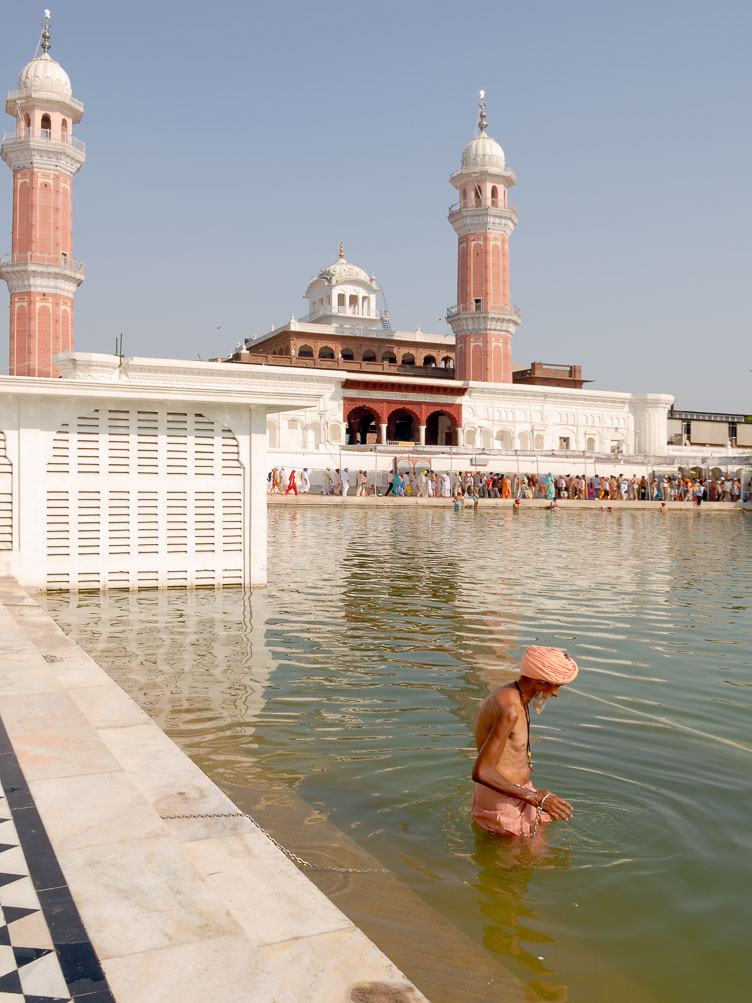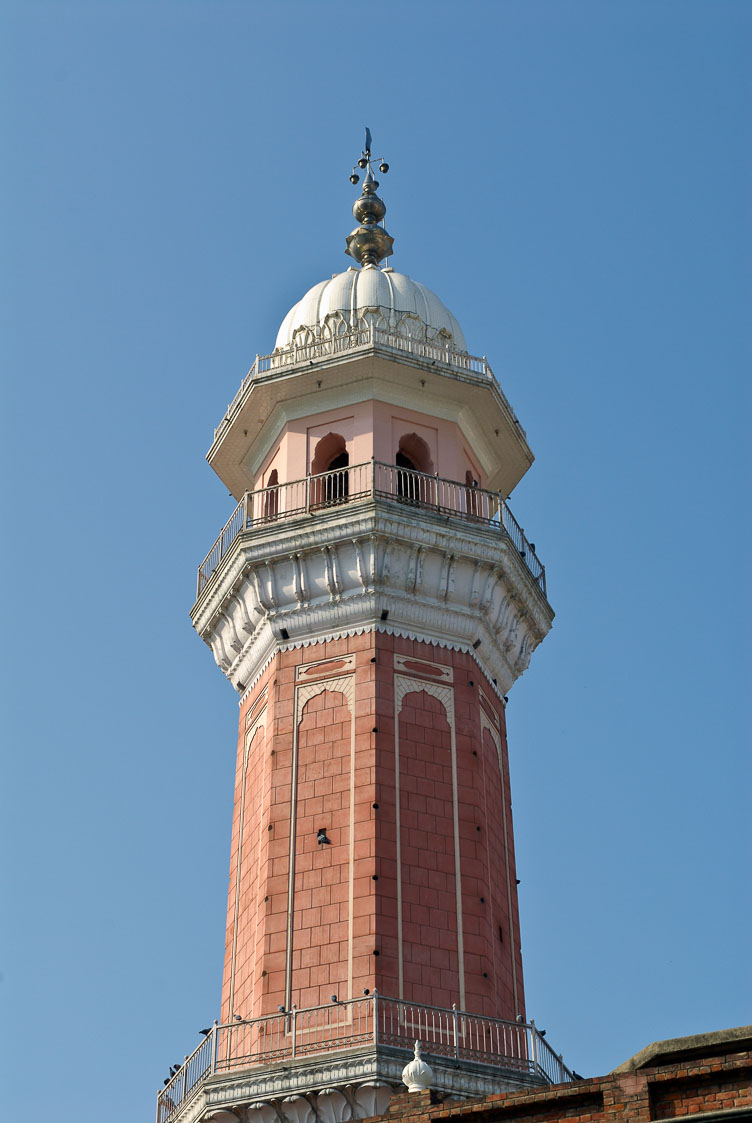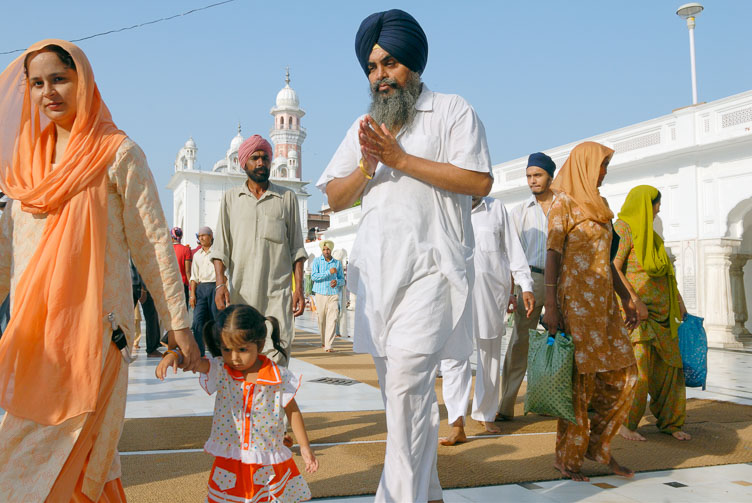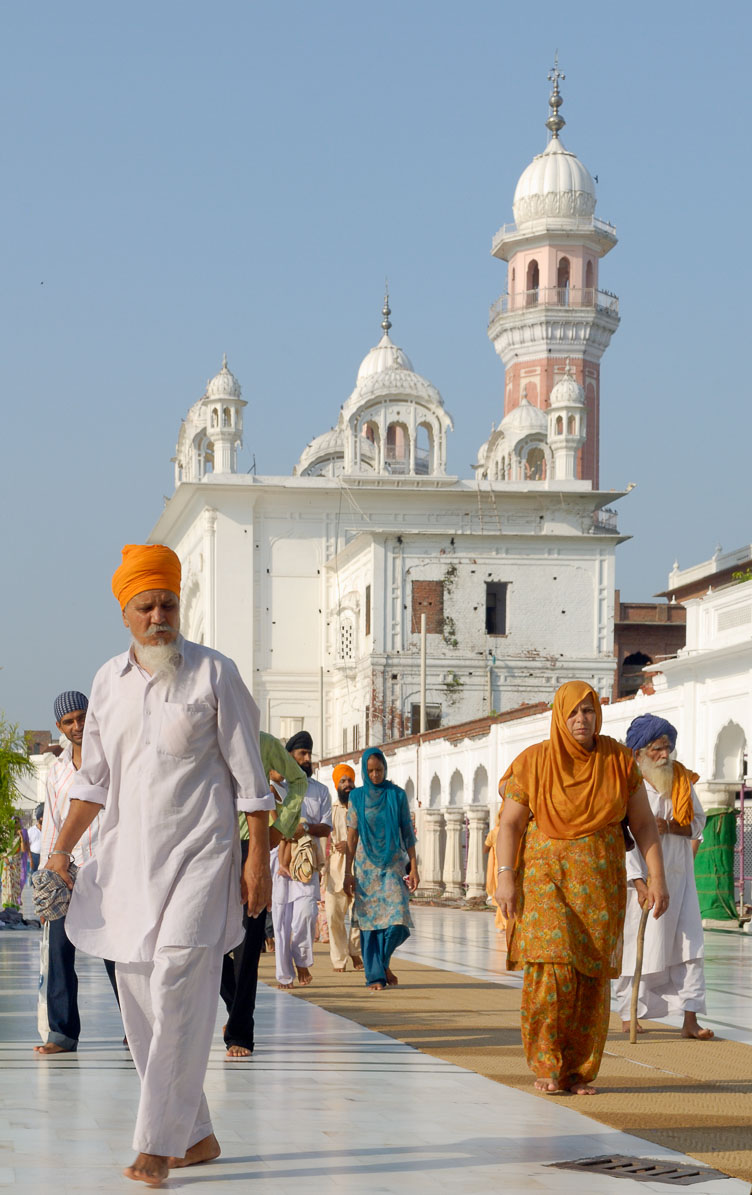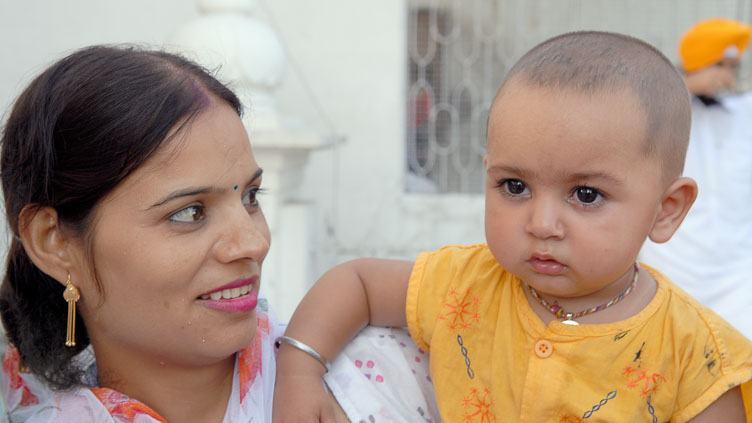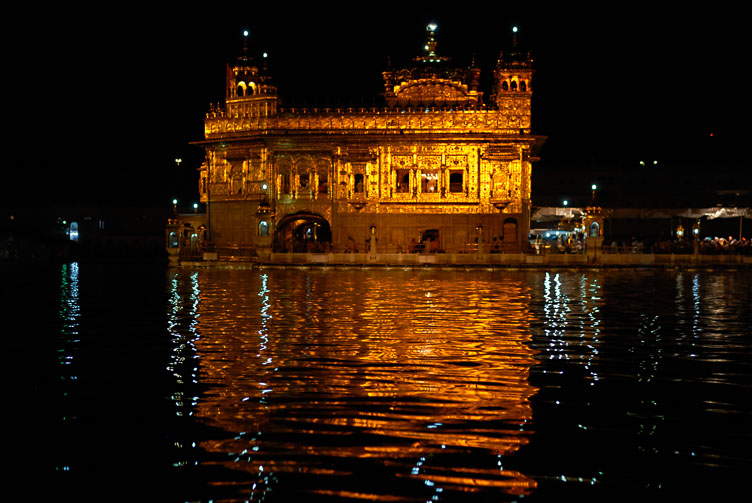The Punjab is the home state of the Sikhs, the third religion in India. The major town is Amritsar. After this city I definitely have the feeling that I want to see more of the state.
Waga border
Near Amritsar is the Waga border, where the Indian and Pakistani border guards make a somewhat strange spectacle of closing the border gates. Imagine Monty Pythons ministry of silly walks, but then seriously. On both sides a very loud crowd is shouting patriotic 'Pakistan' versus 'Hidustan' (not 'Índia'). On the Indian side men and women sit on a different side. On the other side the woman are absent. Both sides have selected border guards that are very tall. Think two meter, looking even taller because the wear a cockscomb-like headdress.
Amritsar
The city center has a pleasantly busy feel. All the Sikh people gave me somewhat of a Santa-claus feeling, because of the robes and beards. As a matter the Sikh, although they often have 'militant professions (or in mechanics) are actually the most peace-loving people. Furthermore as a rule they are more approachable then most Hindu's -that might have something to do with the lack of caste system-and there is hardly ever a 'catch' if a Sikh approaches you. Yet they are a proud people.
Temples in Amritsar worth seeing include the Mata Temple and the Durgiana temple.
The Golden Temple or Harmandir Sahib
But the Golden Temple is the highlight of any trip to Amritsar. In the center of the temple is the main shrine, surrounded by a lake, called the pool of nectar. The roof of the pavilion is made of copper. Accompanied by music, texts from the Sikhs holy book are chanted. A multicolored crowd circles the lake, As the sun sets the soft light and the songs provide a serene atmosphere that gets more intense as the light fades and the copper roof gets its golden glow. A special place.
And the restaurant that has a free vegetarian meal ready for any pilgrim or tourist is the probably the largest in the world. Volunteers hand out up to 100.000 meals a day and the kitchen processes 12.000 kg of flour on an average day.

